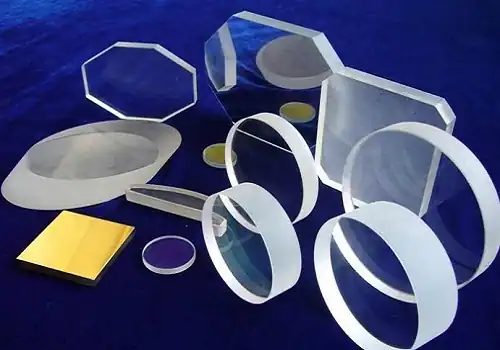Magnesium oxide films are widely used as protective films in plasma displays (PDPs) because of their good resistance to sputtering and high secondary electron emission coefficients, making them an important dielectric protection material. Magnesium oxide is a highly insoluble and heat stabilized source of magnesium for glass, optical and ceramic applications.
Magnesium oxide is generally insoluble in aqueous solutions (water) and is very stable, allowing it to be used in ceramic structures as easily as producing clay bowls for advanced electronics, and in lightweight structural components for aerospace and electrochemical applications, such as fuel cells, which exhibit ionic conductivity. Magnesium oxide is an insulating solid inorganic material with a NaCl crystal structure that exhibits good chemical inertness, electrical insulation, optical transparency, high temperature stability and high thermal conductivity, making it an excellent buffer layer material.

Annealing treatment has a significant effect on the characteristics of magnesium oxide film in plasma display, mainly reflected in the following aspects:

I. Crystal structure
Annealing treatment can improve the crystal structure of magnesium oxide film. The magnesium oxide film without annealing treatment may have a certain degree of crystal defects and amorphous regions. At the appropriate annealing temperature, the atoms gain sufficient energy for rearrangement, prompting the film to shift to a more ordered crystal structure. This results in an increase in the crystallinity of the magnesium oxide film and more uniform and dense crystal particles. The good crystal structure helps to improve the stability and electrical properties of the film.
II. The surface morphology
- Roughness change: annealing treatment can affect the surface roughness of magnesium oxide film. With the increase of annealing temperature and the extension of annealing time, the roughness of the film surface may change. Within a certain range, appropriate annealing can make the surface smoother and reduce the unevenness of the surface, which is conducive to improving the display quality and luminous uniformity of plasma displays.
- Particle size: Annealing may also lead to changes in the size of the crystal particles in the magnesium oxide film. Typically, annealing induces the crystal particles to grow, and the change in particle size can have an effect on the optical and electrical properties of the film. For example, larger crystal particles may affect the transmittance and reflectance of the film.
III. Optical Properties
- Transmittance: Annealing treatment can improve the optical transmittance of magnesium oxide films. After annealing, the film becomes more crystalline and has fewer impurities, which allows more light to pass through the film. This is important for plasma displays because a high transmittance MgO film can increase the brightness and color saturation of the display.
- Refractive Index: Annealing may also change the refractive index of magnesium oxide films. Changes in refractive index affect the path of light traveling through the film and the reflection and refraction characteristics. By adjusting the annealing process parameters, the refractive index of the magnesium oxide film can be controlled to a certain extent to meet the requirements of plasma displays on optical properties.
IV. electrical properties
- Insulation performance: magnesium oxide film in the plasma display plays the role of insulating layer. Annealing treatment can improve the insulating properties of the film and reduce the leakage current. This is because annealing can reduce the defects and impurities in the film and make the crystal structure more complete, thus improving the resistivity of the film.
- Secondary electron emission coefficient: The secondary electron emission coefficient of magnesium oxide films has a significant impact on the performance of plasma displays. Appropriate annealing treatment can optimize the secondary electron emission coefficient of magnesium oxide film and improve the luminous efficiency and stability of the display. The selection of annealing temperature and time needs to be adjusted according to the specific process requirements in order to obtain the best secondary electron emission performance.
V. Chemical stability
Annealing treatment can enhance the chemical stability of magnesium oxide film. During the high temperature annealing process, impurities and unstable chemical bonds in the film may be decomposed or eliminated, thus improving the oxidation and corrosion resistance of the film. This helps to extend the service life of plasma displays and improve their reliability.
In summary, the annealing treatment has a multifaceted effect on the properties of magnesium oxide films in plasma displays. By reasonably selecting the annealing process parameters, the crystal structure, surface morphology, optical properties, electrical properties, and chemical stability of magnesium oxide thin films can be optimized, thus improving the performance and quality of plasma displays.
